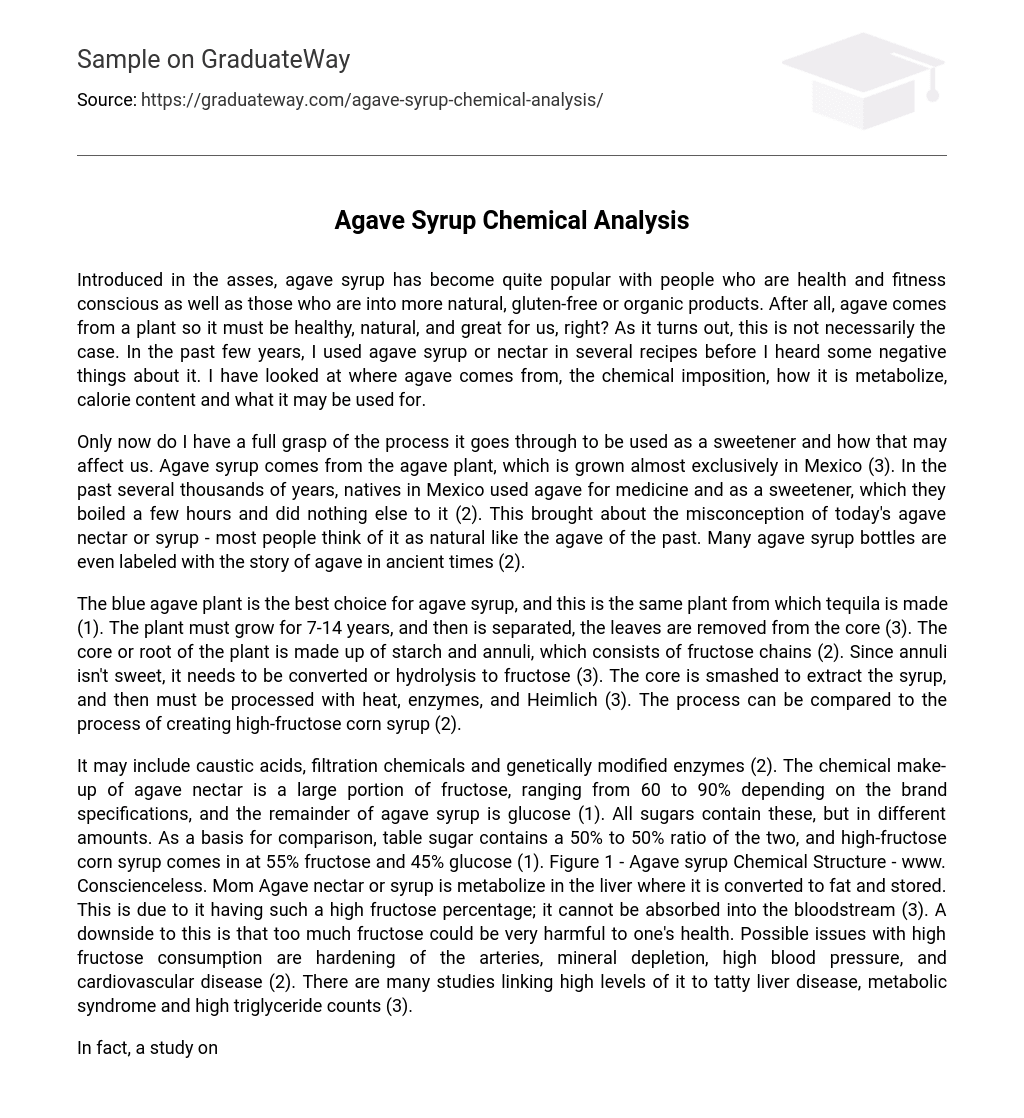Introduced in the asses, agave syrup has become quite popular with people who are health and fitness conscious as well as those who are into more natural, gluten-free or organic products. After all, agave comes from a plant so it must be healthy, natural, and great for us, right? As it turns out, this is not necessarily the case. In the past few years, I used agave syrup or nectar in several recipes before I heard some negative things about it. I have looked at where agave comes from, the chemical imposition, how it is metabolize, calorie content and what it may be used for.
Only now do I have a full grasp of the process it goes through to be used as a sweetener and how that may affect us. Agave syrup comes from the agave plant, which is grown almost exclusively in Mexico (3). In the past several thousands of years, natives in Mexico used agave for medicine and as a sweetener, which they boiled a few hours and did nothing else to it (2). This brought about the misconception of today’s agave nectar or syrup – most people think of it as natural like the agave of the past. Many agave syrup bottles are even labeled with the story of agave in ancient times (2).
The blue agave plant is the best choice for agave syrup, and this is the same plant from which tequila is made (1). The plant must grow for 7-14 years, and then is separated, the leaves are removed from the core (3). The core or root of the plant is made up of starch and annuli, which consists of fructose chains (2). Since annuli isn’t sweet, it needs to be converted or hydrolysis to fructose (3). The core is smashed to extract the syrup, and then must be processed with heat, enzymes, and Heimlich (3). The process can be compared to the process of creating high-fructose corn syrup (2).
It may include caustic acids, filtration chemicals and genetically modified enzymes (2). The chemical make-up of agave nectar is a large portion of fructose, ranging from 60 to 90% depending on the brand specifications, and the remainder of agave syrup is glucose (1). All sugars contain these, but in different amounts. As a basis for comparison, table sugar contains a 50% to 50% ratio of the two, and high-fructose corn syrup comes in at 55% fructose and 45% glucose (1). Figure 1 – Agave syrup Chemical Structure – www. Conscienceless. Mom Agave nectar or syrup is metabolize in the liver where it is converted to fat and stored. This is due to it having such a high fructose percentage; it cannot be absorbed into the bloodstream (3). A downside to this is that too much fructose could be very harmful to one’s health. Possible issues with high fructose consumption are hardening of the arteries, mineral depletion, high blood pressure, and cardiovascular disease (2). There are many studies linking high levels of it to tatty liver disease, metabolic syndrome and high triglyceride counts (3).
In fact, a study on rats used only moderate amounts of agave syrup and still showed a sizeable increase in their triglycerides (3). It is interesting that fructose is such a huge portion of agave as it is marketed to diabetics since it is low-glycerin, or doesn’t raise blood-sugar as much as other sweeteners or sugar, since fructose can cause insulin resistance (1). Overall, experts suggest that while it isn’t the best choice for diabetics, the key is still moderation and that it would be a better choice than refined sugar (1).
The calorie content of agave syrup is 20 calories per teaspoon, while sugar is 16 calories (4). However, agave is much sweeter than sugar, about 1. 4 to 1. 5 times as sweet (4). This could be an advantage, since a person could use less in baking or cooking of agave than other sweeteners. In fact, a baker should use about 2/3 cup agave syrup in place of 1 cup in recipes (5). Agave syrup appears in baked goods like cakes, cookies, brownies (5) as well as alcoholic and non-alcoholic drinks (3). It can also be used in things like granola bars, a recipe I make frequently calls for it.





